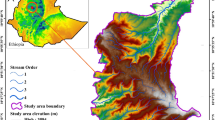Abstract
An involvement of human awareness in the process of decision making implies great complexity in acceptability of Sewage Treatment Plant (STP) on the basis of environmental quality of receiving water bodies. Social environment, physical surrounding and economic constraints have an effect over complex human perception. An importance of pollution parameters in determining an acceptability of STP has a major bearing on the human decisions. Both the decision processes are complex with higher degree of subjectivity involved and therefore call for the analytical computing tools which can imitate the behaviour and bring the results close to the reality. A treated sewage from STPs isgenerally disposed in water bodies without considering Environmental Quality, which promotes degradation of quality of water bodies. An attempt has been made to formulate Fuzzy Rule Based System (FRBS) for an environmental acceptability of STPs, based on their water pollution potential and Environmental Quality of water body. An Environmental acceptability with degree of certainty of these STP has calculated to justify the quality of treated sewage as one value by considering all parameters. A case study of Sewage Treatment Plants which are located in the vicinity of Pimpri, Pune, Maharashtra, India is also incorporated in this study.
Similar content being viewed by others
References
Afshar, A., Mariño, M., Ebtehaj, M., and Moosavi, J. (2007). “Rulebased fuzzy system for assessing groundwater vulnerability.” J. Environ. Eng., ASCE, Vol. 133, No. 5, pp. 532–540, DOI: 10.1061/(ASCE)0733-9372(2007)133:5(532)
Ahmadianfar, I., Adib, A., and Taghian, M. (2016). “Optimization of fuzzified hedging rules for multipurpose and multireservoir systems.” Journal of Hydrologic Engineering, ASCE, Vol. 21, No. 4, pp. 05016003 (1-10), DOI: 10.1061/(ASCE)HE.1943-5584.0001329.
Bai, S. M. and Chen, S. M. (2008). “Evaluting students’ learning achievement using fuzzy membership functions and fuzzy rules.” Expert System with Applications, Elsevier, Vol. 34, No. 01, pp. 399–410, DOI: 10.1016/j.eswa.2006.09.010.
Cattaneo, M. E. G. V. (2016). “The Likelihood Interpretation of Fuzzy Data.” Soft Methods for Data Science, Springer, Vol. 456, pp. 113–120, DOI 10.1007/978-3-319-42972-4_14.
Chen, S. and Hwang, C. (1992). Fuzzy multiple attribute decision making-methods and applications, Springer-Verlag, Berlin, Heidelberg, New York.
Daoud, A., Fayek, A., and Fu, Z. (2016). “Framework for assessing the impact of construction research and development on the construction industry and Academia.” Proc. of Construction Research Congress 2016, ASCE, San Juan, Puerto Rico, United States of America, pp. 78–87.
Deshpande, A. W., Raje, D. V., and Khanna, P. (1996). “Fuzzy description of river water quality: A case study.” Proc. of International Conference on fuzzy logic and Neural Networks, EUFIT, Aachen, Germany, pp. 1795–1801.
Emery, A., Coppola, Jr., Duckstein, L., and Davis, D. (2002) “Fuzzy rule-based methodology for estimating monthly groundwater recharge in a temperate Watershed.” J. Hydrol. Eng., ASCE, Vol. 7, No. 4, pp. 326–33, DOI: 10.1061/(ASCE)1084-0699(2002).
Fazzolari, M., Alcala, R., Nojima, Y., Ishibuchi, H., and Herrera, F. (2013). “A review of the application of multiobjective evolutionary fuzzy systems: Current status and further directions.” IEEE Transactions on Fuzzy Systems, IEEE, Vol. 21, No. 1, pp. 45–65, DOI: 10.1109/TFUZZ.2012.2201338.
Jahagirdar, S. S., Shrihari, S., and Manu, B. (2015). “Reuse of incinerated textile mill sludge as adsorbent for dye removal.” KSCE Journal of Civil Engineering, KSCE, Vol. 19, No.7, pp. 1982–1986, DOI: 10.1007/s12205-015-0731-3.
Jha, R. and Singh, V. P. (2008). “Analytical water quality model for biochemical oxygen demand simulation in river gomti of ganga basin, India.” KSCE Journal of Civil Engineering, KSCE, Vol. 12, No. 2, pp. 141–147, DOI: 10.1007/s12205-008-0141-x.
Jung, J. H., Kim, D. Y., and Lee, H. K. (2016). “The computer-based contingency estimation through analysis cost overrun risk of public construction Project.” KSCE Journal of Civil Engineering, KSCE, Vol. 20, No. 4, pp. 1119–1130, DOI: 10.1007/s12205-015-0184-8.
Kaufmann, A. and Gupta, M. M. (1988). Fuzzy Mathematical models in engineering and management science, Elsevier Science Publisher, New York.
Kazaz, A., Er, B., and Ozdemir, B. E. (2014) “A fuzzy model to determine construction firm strategies.” KSCE Journal of Civil Engineering, KSCE, Vol. 18, No. 7, pp. 1934–1944, DOI: 10.1007/s12205-014-0239-2.
Kepaptsoglou, K., Karlaftis, M.G. and Gkountis, J. (2013). “A fuzzy ahp model for assessing the condition of metro stations.” KSCE Journal of Civil Engineering, KSCE, Vol. 17, No. 5, pp. 1109–1116, DOI: 10.1007/s12205-013-0411-0.
Klir, J. and Yuan, B. (2003). Fuzzy Sets and Fuzzy Logic, Theory and applications, Prentice Hall of India Private Limited, New Delhi.
Lad, R. K., Desai, N. G., Christian, R. A., and Deshpande, A. W. (2008). “Fuzzy modeling for environmental pollution potential ranking of industries.” International Journal for Environmental Progress, AIChE, Vol. 27, No. 1, pp. 84–90, DOI: 10.1002/ep.10251.
Marin-Blazquez, J. G. and Shen Q. (2002). “From approximative to descriptive fuzzy classifiers.” IEEE Transactions on Fuzzy Systems, IEEE, Vol. 10, No. 4, pp. 484–497, DOI: 10.1109/TFUZZ.2002. 800687.
Mendel, J. (2015). “Type-2 fuzzy sets and systems: A retrospective.” Informatik-Spektrum, Springer, Vol. 38, No. 6, pp. 523–532, DOI: 10.1007/s00287-015-0927-4.
Wang, W., Xu, D., Chau, K., and Lei, G. (2014). “Assessment of river water quality based on theory of variable fuzzy sets and fuzzy binary comparison method.” Water Resources Management, Springer, Vol. 28, No. 12, pp. 4183–4200, DOI: 10.1007/s11269-014-0738-4.
Yardimci, A., Muhammetoglu, A., and Oguz, H. (2004). “Fuzzy logic application to environment management system: A case study for goksu streams water quality assesment.” Proc. 8th Int. Conf. of Computational Intelligence, Springer, Dortmund, Germany, pp. 327–338.
Yen, J., Wang, L., and Gillespie, C. W. (1998). “Improving the interpretability of TSK fuzzy models by combining global learning and local learning.” The IEEE Transactions on Fuzzy Systems (TFS), IEEE, Vol. 6, No. 4, pp. 530–537, DOI: 10.1109/91.728447.
Zadeh, L. A. (1965). “Fuzzy Sets.” Information and Control, Elsevier, Vol. 8, No. 3, pp. 338–353, DOI: 10.1016/S0019-9958(65)90241-X.
Author information
Authors and Affiliations
Corresponding author
Rights and permissions
About this article
Cite this article
Dange, P.S., Lad, R.K. A fuzzy rule based system for an environmental acceptability of Sewage Treatment Plant. KSCE J Civ Eng 21, 2590–2595 (2017). https://doi.org/10.1007/s12205-017-1504-y
Received:
Revised:
Accepted:
Published:
Issue Date:
DOI: https://doi.org/10.1007/s12205-017-1504-y




